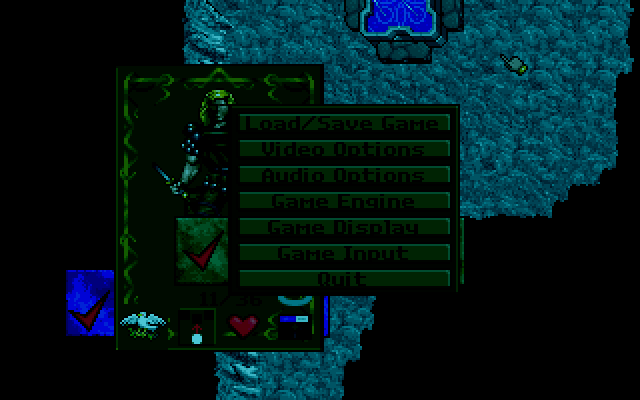TL;DR: Ultima VII: Revisited is a replacement engine for Ultima VII that presents the game in 3D and fixes various issue with the game.
Go to the Downloads tab to find out how to get it.
Follow me on X or BlueSky for updates.
Join my Discord to contribute or just hang out!
If you like what I’m doing, support me on Patreon or Ko-Fi.
Preview of coming attractions.
My name is Anthony Salter and I love Ultima.
The Ultima Series of classic RPGs was created by Richard Garriott (also known as Lord British) along with a bunch of his friends. It represents, in my opinion, the epitome of the ingenuity, beauty and superb design of DOS games.
Ultima games were designed in a unique way. Garriott would build an RPG world, filling it with merchants, monsters and dungeons…but no characters or plot. That would only come after the world had been fully created.
And the worlds he created were as real as he could make them. Day/night cycles, phases of the moon, names and schedules for every character, and a complex dialogue system that required players to actually find keywords in the world to ask characters about. Many fans, myself included, consider Ultima VII to be the epitome of the series’ design, doing things that even now modern games can’t.
I just changed a baby’s diaper. If I want, I can keep the dirty diaper and throw it at an enemy to make them run away in disgust.
So why do people have so much trouble getting into the game nowadays? Why do reviews like this exist?

Well, they exist because of this.
That’s not a video issue, that’s the actual frame rate of the game.
And this.
Your companions are bottomless pits and are incapable of feeding themselves.
And this.

Yes, that’s right – palette effects that make the environment darker also make the user interface darker.
Now, those of us who played the game back in the day put up with all of this because we didn’t feel like we were “putting up” with anything. Previous games had far worse issues, and Ultima VII played better and presented a more cohesive world than anything that came before.
But, yes, it feels clunky and dated today. And while there’s an amazing replacement engine called Exult that helps with a lot of this, its goal is to replicate the original game as closely as possible, which means it can’t solve Ultima VII’s greatest problem – that it was simply ahead of its time. Ultima VII is a 3D world stuck in a 2D engine.
Every object in the world has width, depth and height, and the world itself consists of 3072x3072x16 tile blocks. Ultima VII was in development from 1990 to 1992 (shipping in April ’92), and even though software 3D was taking off at the time, it hadn’t been designed as a 3D game (even though it used a 3D world) and that contributed to its issues.
But software-rendered 3D games with isometric perspectives started coming out very soon after Ultima VII, and every time I saw one I thought, “This is what Ultima VII should have looked like.”
Bullfrog Productions’ Dungeon Keeper.
Myth II: Soulblighter, by Bungie (yes, that Bungie).
Grandia, by Game Arts. Just look at that city flyby!
So my goal with Ultima VII: Revisited is to present the world of Britannia in a 3D engine, using a more modern (but not too modern) presentation. I will also be smoothing off some of the rough corners, like the inventory and combat systems. My goal is to create a new way of playing Ultima VII that will allow the gamer who posted the review above to understand exactly why Ultima VII is so amazing.
-
Recent Posts
-
Archives
-
Meta